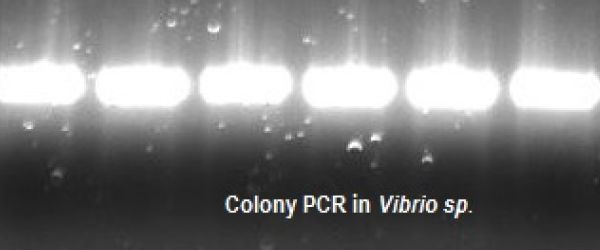Single Nucleotide polymorphisms (SNPs), colloquially pronounced ‘snips’, are the most common type of genetic variation in people. By definition, a SNP represents a single nucleotide variation at a specific location in the genome that is found in more than 1% in the population. For example, a SNP can replace the nucleotide cytosine (C) with an alternative nucleotide thiamine (T) in a C/T polymorphism.
Up to 30 million SNPs exist throughout the human genome. They occur in coding and non-coding DNA, and most have no effect on health or development. However, when they occur within a gene or in a regulatory section near a gene, they may affect the gene’s function, giving rise to differences between individuals in a whole range of characteristics, from eye color to intellect. They can also cause disease, affect disease susceptibility, and determine responsiveness to certain medical treatments. Therefore, SNPs can be extremely useful as biological markers, helping scientists to locate genes associated with a particular disease or predict how patients may react to a specific treatment.
Detecting the combination of SNPs that occur in any one individual is called genotyping and there are methods that can be used, including SNP microarrays, ligation assays, and many others.
In this article I’ll briefly review a probe-based SNP detection method, and look at the importance of probe design and potential applications.
How probe-based SNP detection works
Briefly, probe-based detection of SNPs combines DNA hybridization and the enzymatic activity of Taq polymerase coupled with ?uorescence detection to amplify and detect the sequence of interest.
For each SNP, the assay requires two probes that differ in their nucleotide sequence only at the SNP site, with one probe complementary to wild-type allele and the other to the variant allele; as well as a specific set of forward and reverse primers.
The probes consist of a fluorescent dye (reporter) attached to the 5’end of the oligonucleotide and a non-fluorescent dye (quencher) attached to the 3’ end. Different fluorescent reporter dyes are used in each probe to allow distinction between the two.
When the probes are intact, fluorescence is suppressed as the quencher dyes are close to the fluorescent reporter dyes. They are designed to release a fluorescent signal only when bound to the SNP and hydrolyzed by Taq polymerase.
For SNP detection, PCR is carried out using genomic DNA with the two probes and forward and reverse primers, in the presence of Taq polymerase. In the PCR annealing step, the probes hybridize to their targeted SNP site. Even if the mismatched probe binds to the wrong target, it’s easily displaced by the correct complementary probe which can bind with a much higher affinity. This competition between the two probes for the same target, gives greater specificity than using either probe individually.
During PCR extension, the reporter and quencher dyes are released by the activity of the 5’ exonuclease Taq polymerase, resulting in an increased fluorescence in the reporter dye, as it’s no longer tethered to the quencher dye. At the end of the PCR, the fluorescent signal is measured for the two probes and the ratio between the two indicates the genotype in the sample. In practice, some cross-hybridization of each probe to their opposite allele should be expected, and so the unknown genotype is usually determined according to a scatter plot of end-point fluorescence. The scatter plot typically shows homozygous and heterozygous clustering in a characteristic pattern.
The importance of probe design
The success of probe-based genotyping depends on the quality and specificity of the probe and primer sequences. To optimize sequence design, bioinformatics is indispensable. A fundamental parameter that needs to be considered is the balance between mismatch discrimination and binding stability. The probe must be sufficiently long to ensure binding to the target and release signal, but not so long as to jeopardize specificity.
Shorter probes are favored for their mismatch discrimination, but supplemental chemistry may be required to maintain appropriate binding stability. This may include, for example, modified bases to elevate the melting temperature beyond what the oligo sequence alone would indicate, improving hybridization thermodynamics. Therefore, it is essential to follow the probe manufacturer’s design recommendations.
Sequence databases
Sequence databases are essential to estimate the allele frequency of a particular variant within the population, and to screen for additional variants in the proximity to the targeted SNP of interest. The diversity of polymorphisms in the population has been mapped in the human genome more than in any other model organisms or specimens of scientific interest. It is possible that an unanticipated polymorphism could align to one of the primers or the probes, causing a spurious result that challenges the genotype determination. Whenever possible, adjacent polymorphisms should be masked and avoided during primer and probe design.
Potential applications
As previously mentioned, probe-based SNP genotyping can be used in disease-association studies, where a few thousand samples are tested against a panel of known SNPs. This principle can also be applied in many other fields, including in pharmacogenomics, to elucidate effects of genetic polymorphisms on drug responses in patients. This is becoming an increasingly popular field to answer the strong demand for personalized medication and to avoid adverse drug reactions in patients with a particular SNP. Outside the medical arena, other areas can also rely on SNP genotyping, including for example, marker-assisted selection of agricultural crops, where seed-stocks are genotyped to ensure the propagation of desirable traits.
[sponsor]
SPONSORED TIP, from Biosearch Technologies
Genotyping using BHQplusTM probes
BHQplusTM probes from Biosearch Technologies are powerful SNP genotyping probes using a duplex stabilizing technology. This approach permits the design of shorter oligonucleotides that maintain an optimal melting temperature (TM) for real-time PCR.
BHQplus probes have a fluorescent reporter at the 5′ end, and a Black Hole Quencher (BHQ) dye at the 3′ end. Modified residues throughout the probe sequence enhance the specificity and hybridization strength compared to more traditional probes. In addition to the discrimination of SNPs, these probes can also be used to detect AT-rich sequences due to their increased binding stability, or distinguish closely related species due to their increased specificity.
Click here for more information on BHQ probes from Biosearch Technologies.
[/sponsor]








